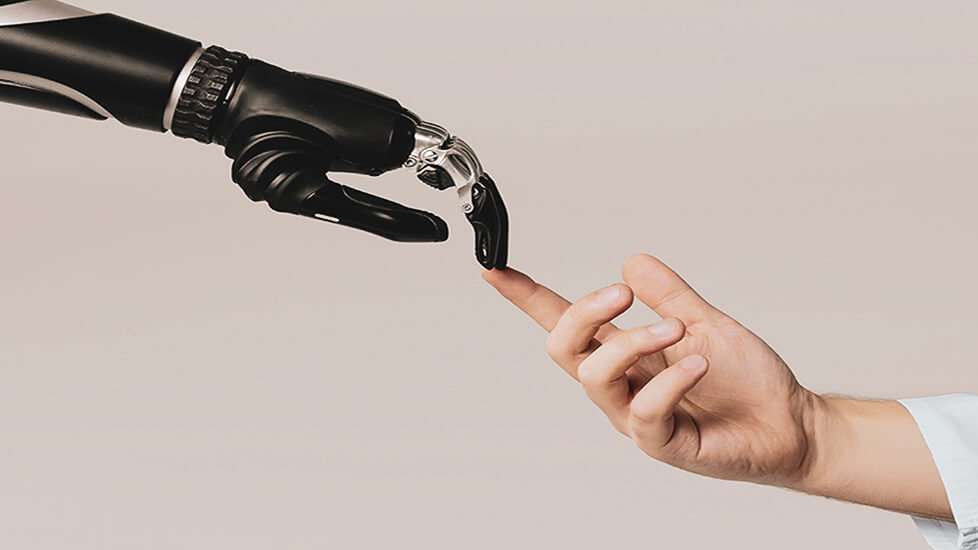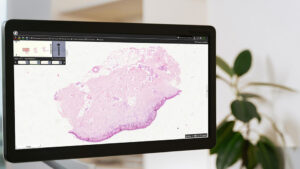Synopsis
As we all know, Artificial intelligence (AI) has created a huge impact on many fields, especially in medicine. Similarly, AI has a huge potential in the growing field of digital pathology. The main benefits of digital pathology with AI are reduced workload, increased speed, higher accuracy, and better patient care and treatment. In image analysis pathology, new tools can be leveraged for better pre-training, features, unsupervised learning, virtual peer review, automation, staining techniques, and data science adoption. We will today discover the potential of AI in digital pathology.
Applications of Artificial Intelligence
Just like other domains, the realm of medicine is also being transformed with the help of Artificial Intelligence (AI) including the field of pathology. This includes using AI in digital microscopy with digital images of tissue specimens.
Key Advantages
The advantages of this system include decreased workload, faster and more accurate results, and increased quality of patient care. Such tasks include the creation of algorithms for analyzing images to identify and categorize different tissues and cells. Due to the vast amount, AI algorithms digest an immense amount of data in a short time.
More Accuracy
The algorithms can process millions of images per day. These algorithms identify diseases by distinguishing healthy and unhealthy cells. This allows for a more accurate diagnosis. Algorithms are trained to detect specific features in images, such as the presence of certain proteins that can help diagnose and treat certain diseases.
Integration of Artificial Intelligence in Digital Pathology
In digital microscopes, AI develops certain predictive models. It uses machine learning algorithms to analyze large amounts of patient information and identify patterns that can be used to predict the likelihood of developing certain diseases and conditions.
Predictive algorithms
These algorithms can interpret samples and identify patients who are likely to develop cancer in the future. If early predictions can be made, appropriate treatments can be administered, saving precious lives. AI algorithms can also be used to predict the effectiveness of certain treatments and identify patients who are susceptible to the side effects of certain drugs.
Impact on Workload
Digital microscopy with AI reduces workload by automating certain tasks, such as image analysis and data entry. AI algorithms also free up time to focus on more complex and critical tasks, such as developing diagnostic and treatment plans. This helps reduce the risk of pathologist burnout, which is a major problem for healthcare professionals.
What Are the Opportunities for AI Integration in Digital Pathology?
New tools for image analysis offer a variety of opportunities including pre-training and better characterization, new learning opportunities, and unsupervised learning. Benefits also include virtual peer review, automation, new staining methods, and access to data science. When the full potential of AI in digital pathology is realized, treatment outcomes will be taken to a whole new level.
- Better Pre-training: Pre-trained algorithms have clear potential in many fields, including the medical field. Using a transfer learning feature instead of training a new network from scratch can help overcome many challenges and save resources. A large knowledge base can be created to provide insights for medical tissue interpretation by utilizing features extracted from millions of images.
- Handcrafted Features: These features ensure accurate recognition with high accuracy. Many established extraction methods, such as local binary patterns and encoded local projections, are useful in many cases.
- New Learning Opportunities: Generative model learning focuses on replicating data without making any decisions. If an algorithm generates image data, it means it understands the image and is therefore capable of generating it.
- Unsupervised Learning: Unsupervised learning has been the backbone of AI since its development. for decades. Furthermore, in the last few years, it has made impressive gains. The potential for successful integration of unsupervised algorithms into the routine workflow of pathology practice is enormous.
- Virtual Peer Review: AI puts pathologists at the center of the healthcare process. With AI, it becomes more acceptable to allow pathologists to make the final decision and provide them with the useful knowledge they need to participate throughout the process.
- Automation: When used and implemented correctly, AI software tools can effectively handle heavy and menial tasks. In addition, they can simplify complex tasks and make them easier to manage.
- New Opportunities for Staining: With the advent of computational pathology, most AI approaches use H&E stained images. This improves the ability to deeply analyze individual pixels of digital images to uncover diagnostic, therapeutic, and prognostic information that may be untapped.
- Accessibility to Data Science: The ability of AI tools to analyze large amounts of image data is indisputable. This is an advantage for pathologists because it enhances the value of your work, makes it more efficient and accurate, and provides greater personal satisfaction.
PreciPoint Digital Microscopes and Slide Scanners
To help you tap into the transformative potential of AI, PreciAI is transforming high-resolution image evaluation using digital microscopy and AI image analysis solutions. By using digital microscopy and AI together, you can take advantage of advanced functionality and increase accuracy, precision, accuracy, precision, and convenience. PreciPoint products allow you to explore the world of digital pathology and optimize the evaluation process.
Conclusion
The combination of artificial intelligence (AI) and digital pathology has significant implications for your daily work. AI-powered processes can dramatically improve workflow and provide significant benefits, including increased speed, accuracy, efficiency, and overall quality of patient care. Digital microscopes with AI capabilities reduce workload and automate processes wherever possible. With AI and digitization, image analysis and data entry are no longer as time-consuming as they used to be. AI algorithms allow you to focus on the most complex and important tasksAs one of the best AI solutions for all digital pathology labs, PreciAI allows you to easily process and annotate manual images to improve accuracy and precision. With effective strategies, you can optimize your work product and achieve a high level of quality.











